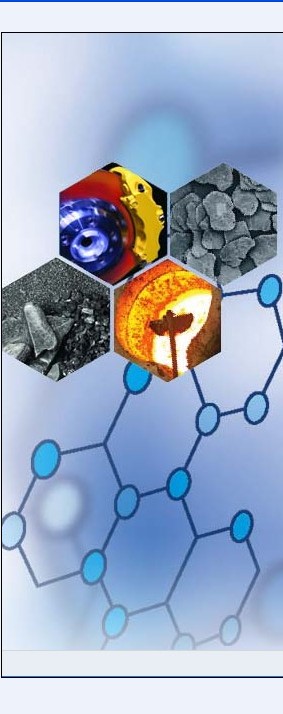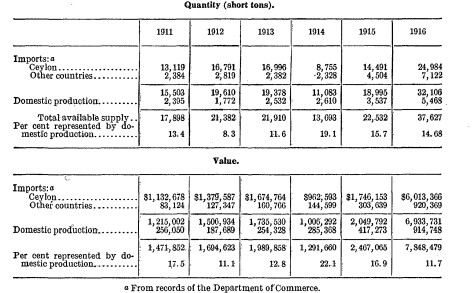CRYSTALLINE GRAPHITE
2013-06-02 03:04:43
CRYSTALLINE GRAPHITE

For most purposes amorphous graphite, either natural or artificial,
may be used with as good effect as the crystalline variety, but for the
manufacture of crucibles it is essential that the flakes be of sufficient
size to add to the binding power of the clay with which the graphite
is mixed. Graphite for crucibles should cany a considerable propor-
tion of flakes 1 millimeter or more in diameter. The great increase in
the manufacture of brass and crucible steel since the outbreak of the
war has resulted in a tremendous increase in the demand for crystal-
line graphite. This demand has been met for the most part by
largely increased imports, particularly from Ceylon, and only in
minor part by expansion of the domestic graphite industry. The
following table shows the imports and domestic output of crystalline
graphite for the last six years:
Crystalline graphite imported and produced in the United States, 1911-1916.

During 1914 and 1915 the imports from Ceylon were less than
normal, owing chiefly to the high freight rates and scarcity of ships.
The sharp increase in the value of the Ceylon graphite imported in
1916 is due largely to the fact that because of the conditions men-
ioned only the higher-grade material was imported.
Domestic flake graphite of a grade suitable, for crucible use has
increased greatly in price during the last two years. The prices paid
at the mines for the highest-grade product, in cents a pound, have
been as follows:. 1911 and 1912, 6 to 7;. 1913, 6 to 8; 1914,, 6$ to 8;
1915, 7 to 10; 1916, 10 to 16,
Average prices of crystalline graphite: of all grades, including dust
as well as flake, have been as follows,
In the United States crystalline. graphite is mined in Alabama,
California, Montana, New York, Pennsylvania, and Texas, and
deposits are known in Alaska, Maine, Massachusetts, New Hampshire,
New Jersey, North Carolina, Vermont, Virginia, and Washington.
Alabama. The Alabama mines contribute about half the total
domestic output. The graphite is found in lenses of graphitic schist,
which occur in a broad belt stretching southwestward across Clay,
Coosa, and Chilton counties. Where mined the schist contains an
average of about 3 or 4 per cent of graphitic carbon. The deposits
are weathered to depths of 50 to 65 feet, and mining is confined to the
weathered material. Weathering has lessened the coherence between
the graphite and other minerals, and consequently the material is
more easily mined and milled than un weathered material. The
unweathered graphite schist, the "blue rock" of the miners, may
eventually be worked, but its treatment will probably involve added
expense and some modifications of the present methods of milling.
Should conditions arise that would compel the United States to
depend on its own supplies of graphite, this "blue rock" may become
a valuable resource.
During 1916 seven companies mined graphite in Alabama, three
of which were new producers; several more companies have begun
operations since January 1, 1917, and others are planning to start in
the near future. Mining and milling methods have been much
improved in recent years, and costs have been so far reduced that it
will be possible for the more efficiently managed companies to con-
tinue in operation even under peace conditions. Recent articles by
Prouty i give interesting descriptions of the Alabama deposits.
New York. Nearly all the New York deposits of graphite that
have been worked are in the eastern and southeastern Adirondack
region, in Essex, Warren, and Saratoga counties and the northern
part of Washington County. West of the Adirondacks some pros-
pecting and development work has been done in St. Lawrence County.
The graphite occurs as disseminated flakes in metamorphic rocks,
crystalline limestone, schist, and gneiss, and the graphite content of
the material mined averages rather higher than in the Alabama
deposits. The deep zone of soft weathered rock which favors cheap
mining of the Alabama deposits is, however, lacking in this northern
region. Near Ticonderoga graphite also occurs in small veins.
Pennsylvania. Chester County has for many years been the center
of the graphite industry of Pennsylvania and within the last 10 years
COPYRIGHT 2008-2013 Chenzhou Top Graphite Company Limited
